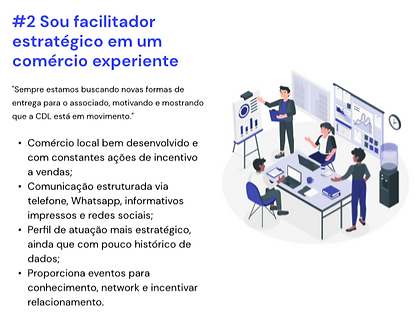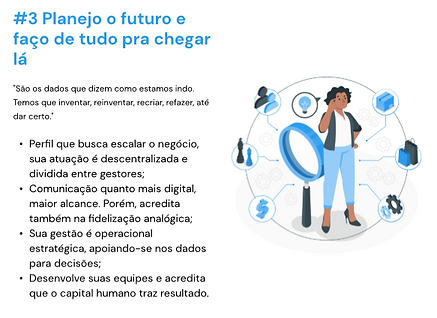"Quero Sorte app" - BrasilCap
About BrasilCap
BrasilCap is a capitalization company of BB Seguros. In the last 28 years, around 15.1 million customers have been able to achieve their plans with the help of our capitalization bonds. And over R$ 2,429,180,000 billion in prizes have been drawn for about 687,421 bonds.
Objective
Validate the concept and the product designed for QR Sorte (an app idea for promotions like raffles), collecting the perceptions of different stakeholders involved in the process.
What was done
Phase 1 - validation of the product concept
Contextual analysis
In-depth interviews
Protopersonas
Analysis of results and production of deliverables
Service blueprint
Phase 2 - Understanding the user and refining the solution
Quantitative research
High-fidelity prototype
In-depth interviews
Usability testing
Phase 1 - Validation of the product concept
Contextual Analysis
Brasilcap had already developed a proposal for an application to promote raffles. However, they wanted to assess the engagement of active customers and explore new possibilities to scale the product.
We sought to understand the actors involved in the proposed service and identified two fronts to be analyzed: the direct actors and the indirect actors of Brasilcap.
-
Direct Actors: Trade Association Centers (CDLs)
-
Indirect Actors: Retailers and end customers
In-Depth Interviews
In the first phase of the project, we considered it ideal to validate the product concept developed by the Brasilcap team and gather possible improvements from the perspective of the CDLs and retailers. These actors would be the main buyers of the commercial proposal offered by Brasilcap. Additionally, we recognized the need for a very clear value proposition linked to the product/service, as Brasilcap wanted to offer the application as an additional service to its members.
Thus, in this first phase, 5 interviews were conducted with CDLs and retailers indicated by BrasilCap.
The results of the interviews were organized in card format, with explanatory texts and phrases collected in the field to support understanding of the topic.
Each card contained an insight and an opportunity detected that provided inputs to the business strategy and guidance for the adopted solution.

Protopersonas
In order to gather behavioral patterns to assist in analysis and decision-making for the development of the final solution, two profiles of CDLs and two profiles of retailers were identified from interviews.
-
CDLs: "I do everything" and "I am a strategic facilitator"
-
Retailers: "I plan for the future" and "I believe in tradition





Analysis of the results
Insights
Among the insights gathered, we understand that:
-
Level of development: the time of foundation and size of the city in which it is located determines the level of development and structuring, planning of the CDLs;
-
Potential for raffles: CDLs and retailers believe in the value of raffles, but see the bureaucracy of organization and implementation as impediments.
-
Opportune scenarios: developing CDLs aim, through promotions with raffles, to maintain local purchasing power against other urban centers. For other CDLs, there is a lack of engagement that can be addressed through raffle campaigns.
-
Communication: the type of channel and communication tools vary according to the level of development of the CDLs. The communication strategies and resources of retailers are adapted according to the target audience and organizational profile.
-
Data and its usefulness: CDLs do not have information about the data generated by their associates.
-
Importance of partnerships: For developed CDLs, there is recognition of the value that third-party companies bring by organizing campaigns with raffles. On the other hand, developing CDLs are unaware of third-party companies specialized in raffles.
Blueprint
From the beginning of the project, we understood that the experience provided by the application developed by BrasilCap involved more than one actor. In this sense, to capture all the points of interaction of the service with the involved actors, we designed a blueprint.
The intersection of all the information from phase 1 guided us towards the tangibility of a final proposal.

Fase 2 - Understanding the user and refining the solution
Under the perspective of the interviewees in phase 1 and understanding the needs identified for the ideal experience proposal, we developed wireframes for the solution idea.
We understood that there should be two different views, one for CDLs and Retailers and another for the end user, the customer. Thus, we developed a dashboard view for CDLs and Retailers and a promotional raffle app view for the end customer.
Quantitative research - Understanding the end customer
We started with a prior understanding of the end user, based on the perspectives provided by the CDLs and retailers. Initially, we developed hypotheses to be validated through quantitative research. Then, we deepened this knowledge with qualitative research, culminating in the final validation of the solution directly with the user.
With a sample of 100 respondents, we arrived at some definitions about the end user:
-
The raffle does not make the consumer effectively buy something; price and quality are among the main motivators for purchase;
-
The raffle is the preferred promotion model among respondents;
-
Overall, people are indifferent to raffles;
-
No resistance to digitization in the raffle process was detected;
-
A large portion of users do not follow raffle results;
-
The preferred registration type for raffles is app;
-
Even showing indifference to raffles, a large portion opts for the establishment that offers a campaign;

Interviews
With the refined solution and the interview script developed from the hypotheses based on the quantitative research data, we moved on to testing with the end user.
The script followed the following organization:
1. Product idea - questions directed at the user's relationship with raffles and their participation habits in this type of promotion;
2. Experience concept - the user was introduced to the interface, following the task flow and interacting with the prototype in a mixed manner, both guided and free;
3. Name validation: the user evaluated a set of possible names for the application, presenting their preferences and the reasons for their choices.

Criteria for sample recruitment:
-
Have participated in prize draws promoted by physical stores, disregarding social media draws;
-
Age groups: 18-25; 26-35; 36-45; and over 45
-
Cities in the states of Rio de Janeiro and São Paulo, with populations ranging from 100,000 to 300,000 inhabitants
-
Classes C and D
Outsourced recruitment
Analysis of results and production of deliverables
As a way to demonstrate the validated or not validated hypotheses after the interviews, we made a comparison of information and presented all the content also in hypothesis cards. 9 validated hypotheses, 5 partially validated, and 2 not validated.



As we wanted to justify and argue all the modifications of features and business rules proposed from the initial idea of the app, presented by the internal team of BrasilCap, we created a large table that synthesizes all the information gathered from the end-user testing. The table contained the explanation of the functionality and evidence captured during the user's navigation.

Results cards
The table was composed of screenshots from the app and its respective solution explained in results cards as shown in the figure beside.
10 results cards were generated. In each card, one could identify the proposed solution, which was a solution for a problem of flow, usability, hierarchy, or semantics.
The name of the solution was also confronted by users at the end of the interview. The initial name was QRSorte, as suggested by BrasilCap. However, all interviewees referred to QR as QRCode, and in reality, the proposal was to shorten the word Quero.
In the end, we suggested the ideal name, from the perspective of the end user, QUERO SORTE.
As a final solution, we presented a simplified dashboard view and a high-fidelity prototype of the promotional app type lottery.


Tools and softwares used: Miro, Figma, Word.
Designer: Pedro (Project Director); Ana Paula Torquato (Project Lead/UX Researcher); Ana Clara (UX Designer), Vitor (UX Designer), Tassiane Castro (PD Senior).